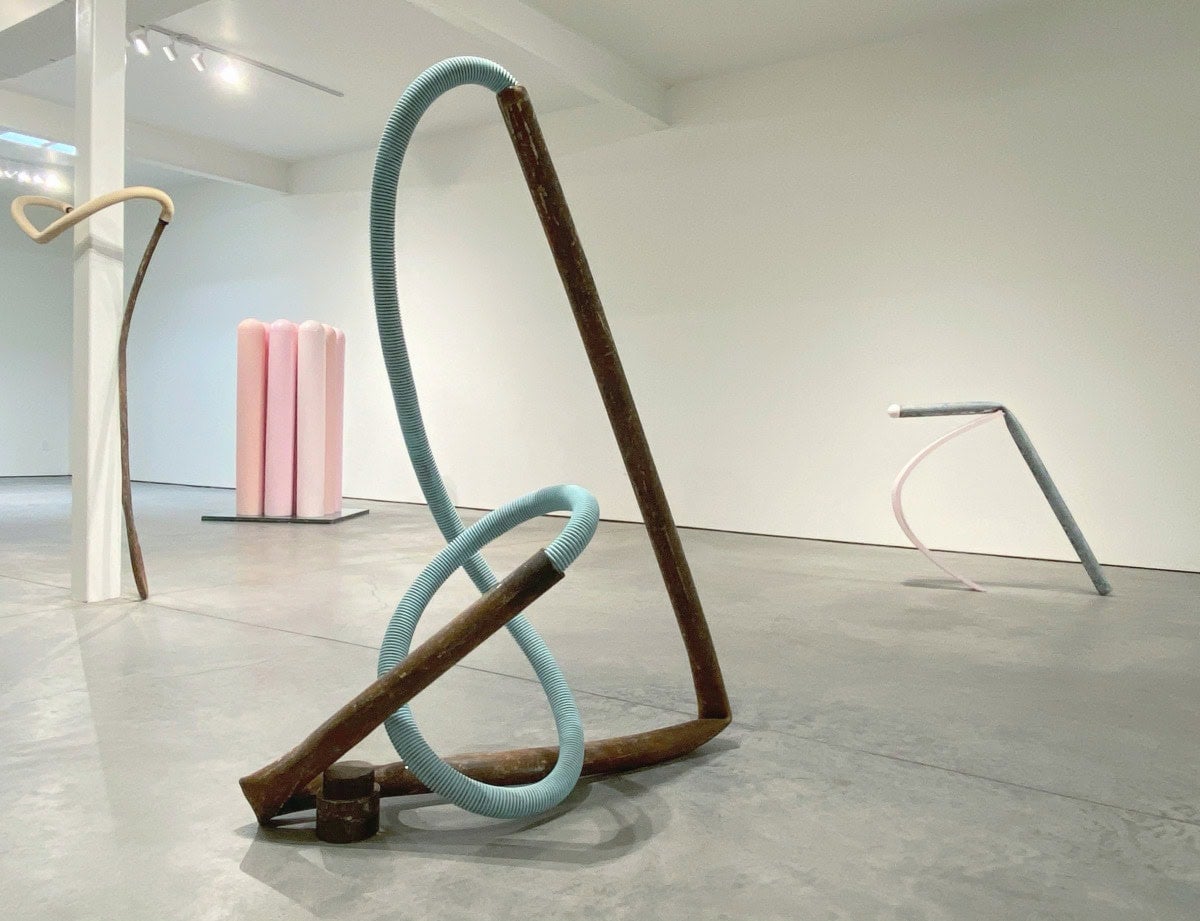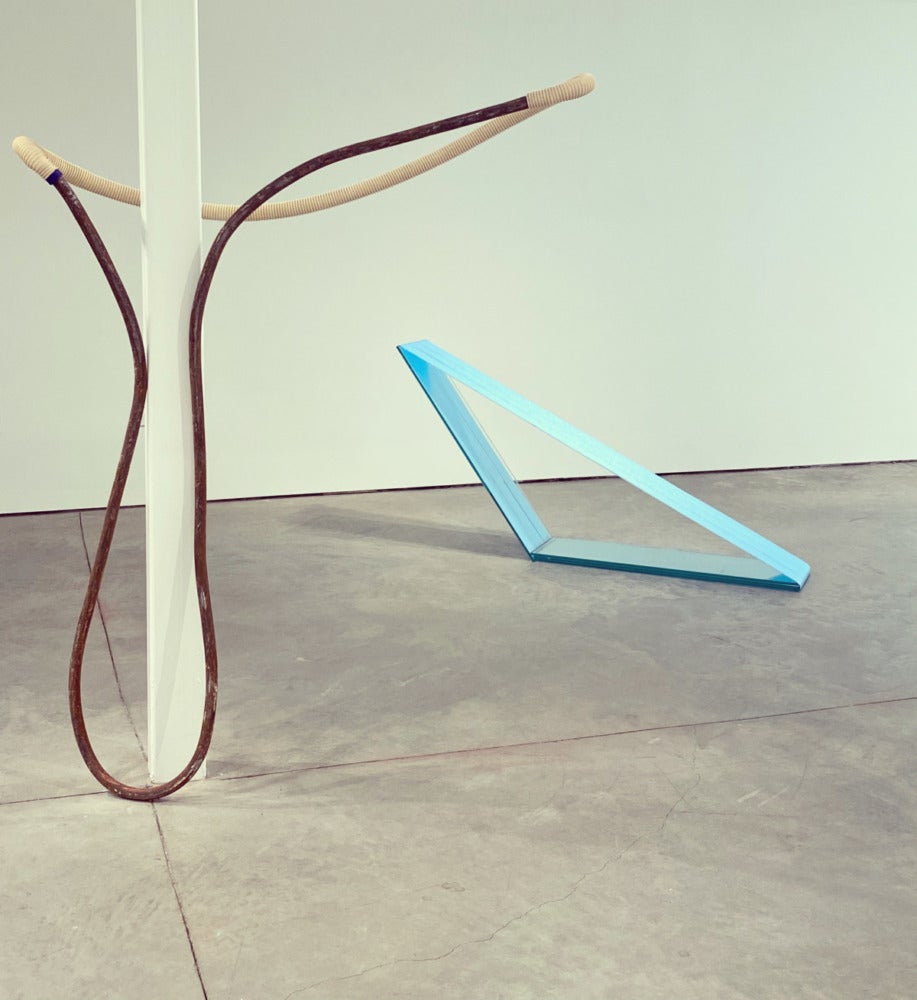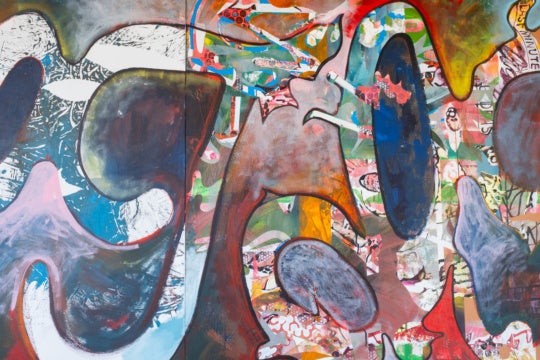
In an interview for ARTnews in 1973, Donald Miller asks artist Sam Gilliam, “How sculptural do you consider your work?” Best known for his off-the-stretcher canvas installations, Gilliam responds, “I don’t consider it sculpture. I know it’s painting. The lines are very narrow. I once heard [Kenneth] Noland say there’s no difference between sculpture and painting once you know what you’re doing.”
At 87, Gilliam’s confidence, quoted here, has seen career validation most explicitly by his inclusion in the Venice Biennale, and the span of time between his two appearances – asked to represent the US for the first time in 1972, he would return in 2017.
Gilliam earned his MFA in painting at the University of Louisville, solidifying Kentucky as the formative place of his youth and education, and not the place where he continues to live, or where he secured his legacy working alongside other Washington Color School members like Morris Louis, Anne Truit and Thomas Downing. But this is about beginnings.
It Is What Is Not Yet Known at Quappi Projects is the inaugural solo show from Louisville-based artist Kiah Celeste. A Brooklyn native, Celeste originally studied photography in college, but for her first exhibition she presents nine sculptural assemblages with minimal material manipulation. Almost exclusively formed of reclaimed materials, these works repurpose architectural markers of an urban environment including road bollards, fence posts, glass plates, steel pipes and more to produce nine separate moments, each buoyed by an emphasis on openness.
For Set, a stave of wood, flexed like a bow with the string pulled back to one’s ear, supports a steel pipe bent at an obtuse angle. Supporting each other, the tension of the curve and the pipe combine to express a flexibility and movement unavailable to the elements separately. The blue pigment and plastic ball adds levity that keeps the piece light on its toes. A similar balancing act occurs in When the Window Cracked. Although the title suggests a future possibility of fracture, so long as the microfilm wrapped around the sheets of glass maintain their system of support, the triangular form provides a tight, relaxed presence, and all is well.
This resistance to any easy read, or pin down, is best expressed with the exhibition highlight Pile of Pink. In this instance a group of road bollards painted various shades of pink huddle together on top of a plinth of bullet proof glass. Despite the allusions to car traffic, gun violence, or color swatches, the form resists any heavy-handed interpretation or commentary.
Although this marks her first exhibition, these pieces have material and compositional precedents that were shown at the Josephine Sculpture Park in Frankfort, KY in 2020. In the piece Rounded Corners, Pointed Curves a repeated motif of exercise balls finds balance and support from glass panes, pressing against each other the rubber compresses and keeps the sheets standing between two concrete cubes. In this piece as well as Gall Blass, the roots of her current exhibition reveal themselves- acts of finesse and clarity.

If Donald Miller were to ask the same question Gilliam so confidently answered in 1973 of Celeste today, “how sculptural do you find your work” the question may find itself working backwards. Gilliam makes paintings that looked like sculptures, but does Celeste make sculptures that look like paintings? Does she consider her work in this way? Does this question make any impact besides situating the reader for the purposes of their interview?
Fortunately these questions, like the work itself, do not require a specific answer. Taken from a quote by Eva Hesse, the title It Is What Is What Not Yet Known provides the closest thing we can hope to gain of knowledge or the future possibilities of Celeste’s practice. Fortunately for any viewer of this work, labored analysis matters far less than the vision executed – a stunning vision that captures the strength in flexibility.
Kiah Celeste: It Is What Is Not Yet Known is on view at Quappi Projects thru March 6.




